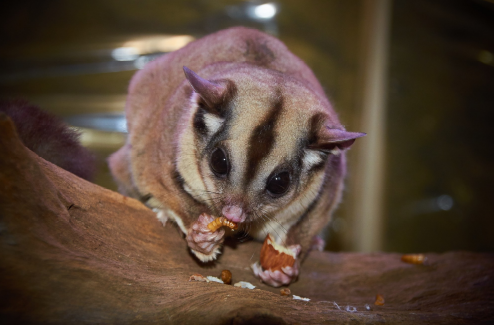
Are you tired of owning dogs, cats, and other common domestic animals? If you want something more exotic, you may want to consider adopting a sugar glider.
These big-eyed, adorable marsupials are native to Australia and Indonesia. They’ve become popular to keep as household pets in the United States, though they are controversial and even illegal in some states.
The decision to adopt should not be taken lightly. They have many unique needs that you must be willing to adapt to.
If you’re serious about taking the leap, you need to learn more about sugar glider care. Read on to find our five tips for taking care of sugar gliders.
1. Feed Them the Right Diet
Sugar gliders need a mix of different foods to thrive. In the wild, they’ll feed on sap, nectar, and even bird eggs. Obviously, this diet isn’t easy to replicate in your home.
You should have a variety of foods on hand to try to mimic what they would be eating in the wild.
We recommend the bulk of their diet be made of fruits and veggies. Apples, bananas, and berries are all great fruit choices. Sweet potatoes, carrots, and lettuce are veggies your sugar glider will enjoy.
Don’t forget to buy powdered vitamin and calcium supplements. You can coat their fruits and veggies with them at every feeding. This will help ensure they’re getting the right nutrients they need to thrive.
As for protein, sugar gliders love live insects. Mealworms and crickets are top choices. Be sure to gut load the insects before offering them.
Non-bug protein options like hardboiled eggs and small pieces of cooked lean meat will also work.
As with most pets, there are some foods you should never offer your sugar glider. Read more on forbidden foods before you adopt your new baby.
2. Provide the Right Habitat
The right living space will provide the best life for your new sugar glider pet. They’ll need a place to sleep, eat, and exercise, so the bigger their cage, the better.
Many owners choose to use birdcages. Since sugar gliders love to climb, taller cages tend to be a favorite. Be sure to leave space for some climbing branches to exercise on.
You may want to consider using bedding or a pet substrate at the bottom of the cage. This will help to catch droppings and absorb urine.
Since your new pet is nocturnal, they’ll need a nesting box for sleeping during the day. Some sugar gliders prefer pouches, while others prefer something like a birdhouse.
3. Know the Risks
As with any animal, there are some conditions that sugar gliders are prone to.
Without a calcium-rich diet, they can become lame or paralyzed.
Without enough roughage, they can become constipated. On the opposite end of the spectrum, they can easily get diarrhea if given the wrong diet. This can lead to fatal dehydration and become life-threatening quickly.
Your sugar glider will need to see an exotic veterinarian. If there isn’t a vet nearby that can help, you may not want to adopt a glider. If your pet were to get sick, how could you provide care for them?
Sugar Glider Care to Consider
These are just the basics of sugar glider care. If you’re seriously considering bringing one into your home, be sure to do further research. They can enrich your life in many ways, but they aren’t necessarily an easy pet to keep.
Be sure to print off our sugar glider care sheet and read it several times before taking the leap.
Check out our Pets section for more tips on animal care.


Speak Your Mind